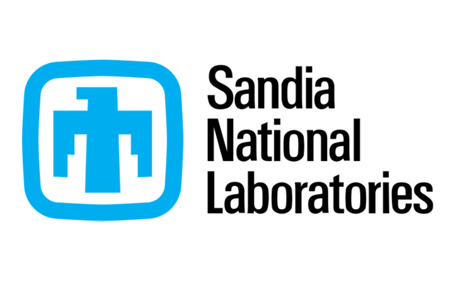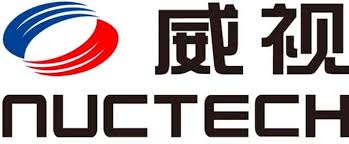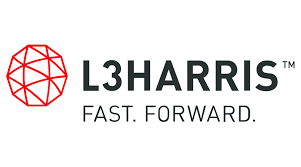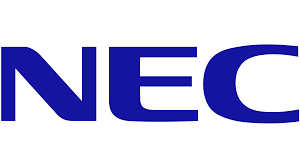Archived Reports
If you want to make a purchase by email or fax, click here to download our purchase form. Reports are delivered in PDF format within 24 hours. Prices below are quoted for single user license. For departmental and global site prices please check out report pages or contact us.
Homeland Security Equipment & Software Standards Review
110th Congress Impact on US Homeland Security Market
Publication Date: 02/2007, Pages: 87, Figures: 11, Tables: 11
 |
|
 |
 |
Price:$950 |
|
The research analyzes in detail the legislative and political agendas of the new Democratic Congress, the new leaders of homeland security related committees and other relevant committees, the economic, operational and political climates. The conclusions are contained in a detailed forecast of the homeland security markets and the technological sectors that will be impacted by the new Democratic Congress.
Markets covered by this report include, among others:
- Chemical Plants & Hazmat security markets
- Mexican Border Fence markets
- Communications Interoperability markets
- Immigration technology markets
- Air Cargo security markets
- Container Security markets
- Land transportation security markets
US Homeland Security Government and Private Sectors Market Outlook – 2007 – 2011
Publication Date: 01/2007, Pages: 675, Figures: 373, Tables: 216
 |
|
 |
 |
Price:$950 |
|
This research report provides the only detailed and reasoned roadmap of this complex market – both government and private sectors. This market research provides an exclusive insight into the vibrant HLS industry and its future. The research drills down in many areas and brings to light a plethora of new angles and business opportunities including:
- Private Sector Markets – $28.5 Billion of HLS products and services are forecasted to be procured from the HLS industry during 2007-2011 by the private sector. These markets are analyzed and segmented by industry sector (e.g. banking & finance, chemical & HAZMAT, energy, water) and products/services category procured (e.g. perimeter protection systems, cyber terror security, biometric systems).
- 110th Congress Implication – The implications of the 110th Democratic Congress on HLS markets are incorporated in the report analysis and forecasts.
- Top 10 Leading HLS Industry Sectors – Ten HLS industry sectors are forecasted to each total over $8.5 billion cumulative 5 year revenues. An in-depth market analysis and forecast of each of these top 10 leading sectors (e.g. Airport Security, Port & Maritime Security, Information Technology, Perimeter & Border Protection, Cyber-security) is provided.
- Top 10 Fast Growth HLS Industry Sectors – Revenues of 10 HLS industry sectors are forecasted to grow by 60% to 400% during 2007-2011. Each of these fast growth sectors (e.g. RFID Systems, Nuclear Screening Portals, Communication Interoperability, Bio-Chem. Agents Detection & Mitigation) is analyzed by procurement programs, technology and market outlook.
- U.S. Government Markets – The cumulative $123 Billion U.S. government HLS five year forecasted procurement schedule is segmented by the 20 HLS leading agencies. Each agency HLS’ activity, strategic missions and markets is analyzed.
CBRN Decontamination Industry Outlook – 2007 – 2012
Publication Date: 07/2006, Pages: 140, Figures: 47, Tables: 9
 |
|
 |
 |
Price:$950 |
|
This report describes existing and upcoming technologies, markets, business and funding opportunities related to producing, using, and/or stockpiling Chemical, Biological, Nuclear and Radiological (CBRN) decontamination equipment and material for the purpose of decontaminating people, as well as indoor and outdoor environments.
The research answers, among others, the following questions:
- What are the main drivers and inhibitors relevant to existing decontamination technologies and markets?
- What are the business opportunities that arise from the distance between existing technologies and products and the technologies and products required to provide needed protection?
- Who, in government, is involved with decontamination R&D, and what is the funding opportunities horizon through the end of the decade and the start of the next decade?
The systems reviewed in this report include the following modalities:
- Personnel decontamination systems
- Equipment decontamination systems
- Infrastructure and Building decontamination systems
- Environmental decontamination systems
U.S. Bio-Detection Homeland Security Technology & Market Outlook – 2007 – 2012
Publication Date: 06/2006, Pages: 209, Figures: 92, Tables: 63
 |
|
 |
 |
Price:$950 |
|
The Bio-Detection markets present some of the fastest growing and vibrant markets in the Homeland Security industry. This research forecasts a 96% CAGR for 3rd-generation Bio-Detection technologies revenues between 2008 and 2012, which translates to an 80% market share for these technologies in 2012. The rapid growth for these 3rd generation technologies will coincide with a fast decline of 1st & 2nd -generation homeland security Bio-Detector markets which are forecasted to collapse at -20% CAGR. The growth of the 3rd generation technologies will result from the premium bio- agent selectivity, sensitivity and fast response coupled with a dramatic reduction in use of expensive reagents that these technologies are expected to provide.
HSRC’s team of scientists and industry executives meticulously researched and analyzed each of the 4 modalities of bio-detection:
- Outdoor Automatic Standoff-Detectors (e.g., project BioWatch)
- Indoor Automatic Standoff-Detectors (e.g., Project BDS – U.S. Post Office)
- Emergency Responder Biological Mobile Labs
- Emergency Responder Biological Hand-Held Detectors
For each modality, the research provides a detailed analysis and forecast for 3 generations of technologies, providing for 12 the market segments that will make up this industry for the next 5 years.
For each of the 12 market segments, the research provides the following:
- Present & Next Generation Technologies – present technologies analysis and an in depth analysis of Bio-Detection candidates of next generation technologies
- Current and upcoming business opportunities – 14 specific business opportunities outlined and analyzed
- 2007-2012 Market forecasts – Various and detailed forecasts including install base and annual sales in units and dollars, for the next 6 years
- 2007-2012 Service and upgrade business – 6 year forecasts of the service and equipment installation and upgrade business, which are the main source of gross margin for this industry
U.S. Homeland Security R&D – Programs and Funding Opportunities – 2006-2010 – 3 Volumes
A cumulative $25 Billion will be allocated to Industry and Academia from 2006 to 2010 by the U.S. Federal, State and Local governments to advance R&D in Homeland Security. These funds are distributed in order to vastly improve the numerous technological shortcomings in existing homeland security technologies and products. This enormous R&D effort is spread over nearly 20 government agencies across dozens of homeland security sectors and will fund 100s of programs in 2006 and as many as 4,000 by 2010.
Homeland Security Research Corporation embarked on a massive research effort, to identify these multiple sources of R&D funding, fully understand the homeland security R&D funding trends, current and future technologies, unanswered needs, legislation, and terror-tactics in order to provide a complete picture of the U.S. Homeland Security R&D efforts in the next 5 years. We provide the results of this analysis in three detailed reports that include Homeland Security R&D funding opportunities, analysis of resources, programs and budgets, and forecasts segmented by Application, U.S. Federal Agency, Grantee, Mission Activity and Strategic Activity.
Volume 1: U.S. Homeland Security R&D – Programs and Funding Opportunities – 2006-2010Publication Date: 12/2005, Pages: 472, Figures: 307, Tables: 118
This research report examines the entire U.S. Homeland Security R&D landscape, describes in detail the existing and evolving HLS R&D markets, analyzes and forecasts their development over the rest of the decade – both by department/agency and by mission (e.g., Physical Security, Cyber Security). This volume covers a greater number of areas and sectors than Volumes 2 and/or 3. |
||||||
Volume 2: U.S. Homeland Security Technologies R&D – Programs and Funding Opportunities – 2006-2010Publication Date: 01/2006, Pages: 282, Figures: 173, Tables: 70
This research report examines the efforts to develop novel automated means for the detection of a terrorist threat before it is carried out. Such detection capability will be critical in protecting the population against Chemical, Biological, Radiological, Nuclear and Explosives. Novel detection concepts are required across the spectrum, since current technologies are inadequate at best. This volume delivers the program analysis by application (i.e., Nuclear Detection, Biological Detection, Diagnostics, Detection Networks) and provides a more in-depth analysis of the programs in each |
||||||
Volume 3: U.S. Homeland Security Pharmaceuticals & Chemicals R&D – Programs and Funding Opportunities – 2006-2010Publication Date: 02/2006, Pages: 325, Figures: 190, Tables: 66
This research report examines the efforts to develop new therapeutics and vaccines, whose purpose will be to minimize post-attack damage. In particular, this effort focuses on the development of novel vaccines and drugs that treat recognized biological terror threats, and can minimize the damage of such attacks. This volume delivers the program analysis by application (i.e., Biological Therapeutics, Vaccines, Decontamination and Chemical Therapeutics) and provides a more in-depth analysis of the programs in each. |
||||||


















